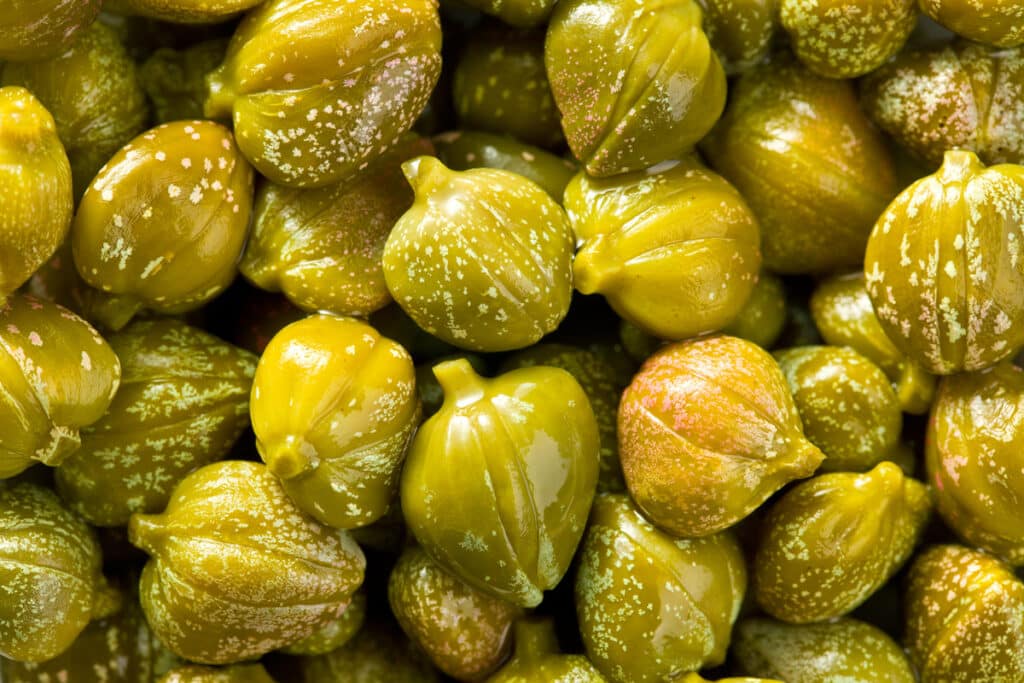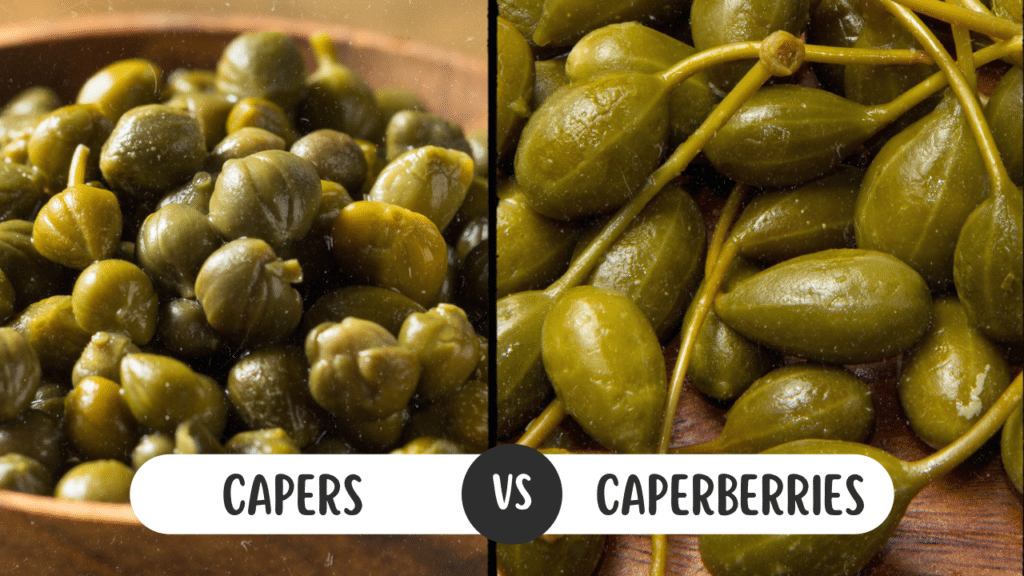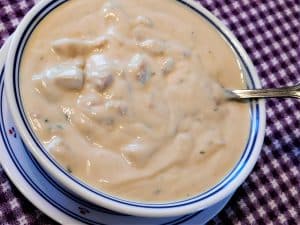What Are Capers?
Important Note: When you buy through our links, we may earn a commission. As an Amazon Associate we earn from qualifying purchases. Content, pricing, offers and availability are subject to change at any time - more info.
Key Takeaways
- While famous as an ingredient in seafood dishes, sauces, salad dressing, meals with lemon-based flavors, and as a topping for sandwiches and pizzas, capers are actually versatile enough to be added to just about anything. Use them as you would salt to begin discovering their versatility in more areas than the classic go-to recipes. Just work sparingly and mindfully around the bitter floral undertone.
- We suggest starting with pairing capers with other strong flavors before integrating them into more delicate recipes. If you haven’t yet tried capers and are trying to get a better idea of the taste, imagine them as similar to a green olive, just with a bolder bitter taste, a higher level of salt, and the lingering flavor of brine prevailing throughout every bite.
- Key Takeaways
- What Are Capers?
- Capers Definition
- Caper Types
- What Do Capers Taste Like?
- What Are Capers Used In?
- How To Eat Capers
- Where Do Capers Come From?
- How Do Capers Grow?
- How Are Capers Harvested?
- Best Substitute For Capers
- Capers Vs. Caperberries
- Tips For Cooking With Capers
- Frequently Asked Questions About Capers
Those who’ve had the pleasure to enjoy capers in some of their best uses will fondly remember the tangy green orbs from dishes like chicken piccata, baked salmon with lemon caper sauce, and puttanesca sauce, to name but a few. These pea-sized flower buds pair wonderfully with a broad range of food but suit seafood particularly well. We’ll be taking you through a complete look at what capers are, the flavor to expect, awesome ingredient combinations, and much more.
What Are Capers?
| Main Flavor | Salty, Bitter, Piquant – Similar To Green Olive But Bolder Briny Flavor |
| Taste Notes | Earthy, Lemony, Sourish, Floral |
| Appearance | Small Green Buds Roughly ¼ Size Of A Green Olive |
| Consistency | Firm But Springy, Cracks Open & Pops When Fried |
| Best Uses | Seafood, Pizza/Sandwich Topping, Salad Ingredient, Salad Dressing/Sauce Ingredient |
| Substitutions | Green OIives, Black Olives, Unripe Nasturtium Buds, Unripe Marigold Buds, Unripe Cassia Buds |
Capers Definition

Capers are the small unripened hand-harvested edible flower buds of a perennial called the caper bush native to the Mediterranean but today cultivated in various locations that have been consumed for over 2000 years. Although available dry and salt-packed, capers are almost exclusively sold in a pickling solution or vinegary brine. Two species are grown and harvested, namely the most widespread caper bush or Capparis spinosa, or a bush colloquially known as the ‘Flinder’s Rose,’ Capparis inermis.
Caper Types
The price and classification of capers depend on their size. Capers that are 0.28-inch/7-mm and smaller are known as nonpareils and cost more than grusas that reach up to 0.55-inch/14-mm. Smaller capers are more expensive than their older counterparts due to being favored for their firm consistency and more subdued aromatics. The larger the caper, the stronger the flavor.
What Do Capers Taste Like?
Unprocessed, freshly harvested capers are very seldomly consumed as-is before drying and brining, but they have a floral, flat, earthy flavor that’s so overwhelmingly bitter that it’s hard to taste any of the underlying taste notes, such as the tangy, lemony olive-like highlights that picked capers are so famous for. Once brined, the bitterness is subdued and gives way to the full selection of rich, pungent, tangy flavors, including their characteristic piquancy.
What Are Capers Used In?
Despite having a finite, bold flavor, capers are very versatile. One of their most popular pairings is with fish and sauces suited to fish. For example, capers are a vital component of traditional tartare sauce. You’ll also find capers accompanying other pickled foods on every classic Italian antipasto served, and it’s often included in pesto. Cooks from all around the world use capers as a topping to accentuate the flavors imparted to chicken, beef, and other meats, as well as vegetables of all sorts, while adding salt and acidity to the dish. Two of the most famous recipes containing capers are puttanesca and chicken piccata, but there are actually endless ways to eat these tiny briny tasties.
How To Eat Capers
We suggest trying a few capers sprinkled over a favorite sandwich or sandwich topping like avocado. Those who enjoy seafood will fall in love with their favorite meals all over again after adding capers. They’re standing in pesto and irresistible in salad dressing. You can mix capers into saucy foods like all types of pasta, and it elevates scrambled eggs to an all-new high. Lemon suits the taste of capers to perfection, so try out any citrus-based combinations for a tasty spin on classic recipes that you’ll keep coming back to.
Where Do Capers Come From?
Although originally native to the Mediterranean, capers are commercially grown in Italy, Greece, Iraq, Turkey, Morocco, Argentina, Spain, Asia, and Australia. The highest quality capers in the world are considered to come from the Italian island and comune Pantelleria, which is situated in the Strait of Sicily, and the Aeolian Islands north of Sicily, especially the second largest island in the archipelago, Salina. In many localities like Almeria, Grenada, and both Salina and Pantelleria, capers grow so abundantly in the wild that they are harvested from their natural habitat. However, intensive global caper cultivation makes up a significant number of commercial caper production.
How Do Capers Grow?
In order for capers to thrive, they require a hot, arid climate with intense daylight and an extended growing period that experiences a rainy spring and warm summer. As a rupicolous plant that’s highly tolerant to drought, the caper bush normally grows among or on rocks while managing fine among gravelly, rocky, silty clay, and sandy ground types. It takes several growing seasons before a caper plant becomes mature enough to start showing blooms. Yet, once a mature caper bush begins to bud, it will continue producing buds and, consequently, berries for many years.
How Are Capers Harvested?
Throughout the growing season, workers harvest young caper flower buds by hand at intervals averaging ten days a session. This means that harvesting occurs roughly twelve times per growing season. Most of the time, the smallest, youngest buds are harvested first as they fetch the highest price as the most desirable variety. Even the leaves are picked and used either fresh or pickled by local growers and their communities in salads.
Best Substitute For Capers
The best substitute for capers is green olives. Otherwise, if no variety of olives is available, add chopped pickles and a little extra fresh lemon flesh or lemon juice. Green peppercorns are a popular alternative but keep in mind the strong flavor imparted. Caperberries work in a pinch. Just adjust the saltiness accordingly. Finally, while these three suggestions are actually the very best substitutes for capers, they are also the hardest to find and therefore have been suggested last. Unripe nasturtium, marigold, and Cassia buds are the ultimate replacements if you can find them.
Capers Vs. Caperberries

The main difference between capers and caperberries, despite both being harvested from the same bush, is that capers define the immature, unripened buds before they flower and open, whereas caperberries refer to the fruit of the caperberry bush. Caperberries are roughly as big as olives and carry a lighter taste but similar flavor to capers. Both are brined or pickled before eating.
Tips For Cooking With Capers
- Always soak salt-packed capers in water for at least fifteen minutes before use.
- To reduce the saltiness of capers, rinse them with water.
- To reduce the intensity of the vinegary flavor of capers, rinse them in milk followed by water.
- To reduce saltiness and lower the overall intensity of capers, soak them in water for twenty minutes or milk for the same duration to lower both even more.
- Use capers in the place of anchovies for a vegetarian Caesar salad or follow our guide to buy the best tasting Vegan caesar salad dressing available.
- Use capers in place of salt in any of your favorite recipes. Just work around the bitterish taste.
- Capers pair well with other intense flavors like radishes and smoked meats.
- Capers can be fried as well as battered in cornstarch and deep fried as a tasty alternative to croutons.
- If frying capers, dry them between paper towels first to prevent splattering.
- Add capers to your meals towards the end of the cooking process so that they stay intact and so that the dish doesn’t inherit too much bitterness or saltiness.
Frequently Asked Questions About Capers
Still, wondering about anything concerning capers? Read on. Our FAQ resolves all common queries.
While the shelf life will typically be clearly stated by each food processor in the label, most good pickled/brined caper brands will last between one to two years if unopened and constantly kept cool in a refrigerator. Salt-cured capers normally last a year, opened. Once opened, expect all capers to last up to six months or less, depending on cross-contamination from other food sources and/or the storage conditions.
The smaller the capers, the better but this also translates to a higher price. We recommend always buying small capers marked ‘nonpareil’ in brine rather than those that have been cured in salt, as the high sodium level becomes overpowering very quickly.
Capers and caperberries are considered a fruit. One has to remember that capers are the buds of the caper bush that, once ripe, flower and form caperberries, which is why they cannot be classified as a vegetable.
No. Capers are not the same as olives despite being brined in a similar salty, acidic solution. Caperberries carry a similar size and look to olives, but the taste and texture are completely different.
Brined or pickled capers shouldn’t be rinsed as the brine itself adds immense flavor. Those who prefer a milder taste are free to rinse pickled/brined capers. Salt-packed capers, on the other hand, need to be thoroughly rinsed before any of their applications are undertaken.
As a pickled product, capers are ready to eat straight out of the jar. The taste is, however, very intense, which means that most people in the majority won’t be as easily drawn to eating them one after another as is often the case with olives. Cooking levels the intensity and develops depth of flavor but isn’t necessary. Blending capers with herbs, spices, and oils all enhance and balance the flavor.
Capers are not commercially grown in the US. The United States does, however, have the ideal growing conditions in terms of soil and water in California, particularly the San Francisco Bay region. Several home growers across the States reported excellent growth from their caper bushes despite growing them in an in-optimal climate.
The simplest caper brine that cooks can make at home is a blend of half white wine vinegar and water with a tablespoon of salt per cup of the brine. If white wine vinegar isn’t available, opt for apple cider vinegar instead. Sometimes a mix of vinegar and lemon juice is preferred. Many manufacturers soak their capers in wine vinegar or water before brining in order to soften the flavor and reduce saltiness.
Certain recipes call for caper brine, and if you don’t have a jar of capers on hand, substitute olive brine instead. Otherwise, your only other option is pickle brine, white wine vinegar, or apple cider vinegar. Just remember, the non-brine options won’t have the saltiness you need. Always adjust the salt according to your substitute.
Eating capers regularly supplies the body with a healthy concentration of antioxidants that lower inflammation throughout the body while also lowering the risk of acquiring chronic conditions. Capers are particularly good for the liver and have been clinically proven to support disease regression in patients with non-alcoholic fatty liver disease. They even have antidiabetic effects that are currently being studied.
























